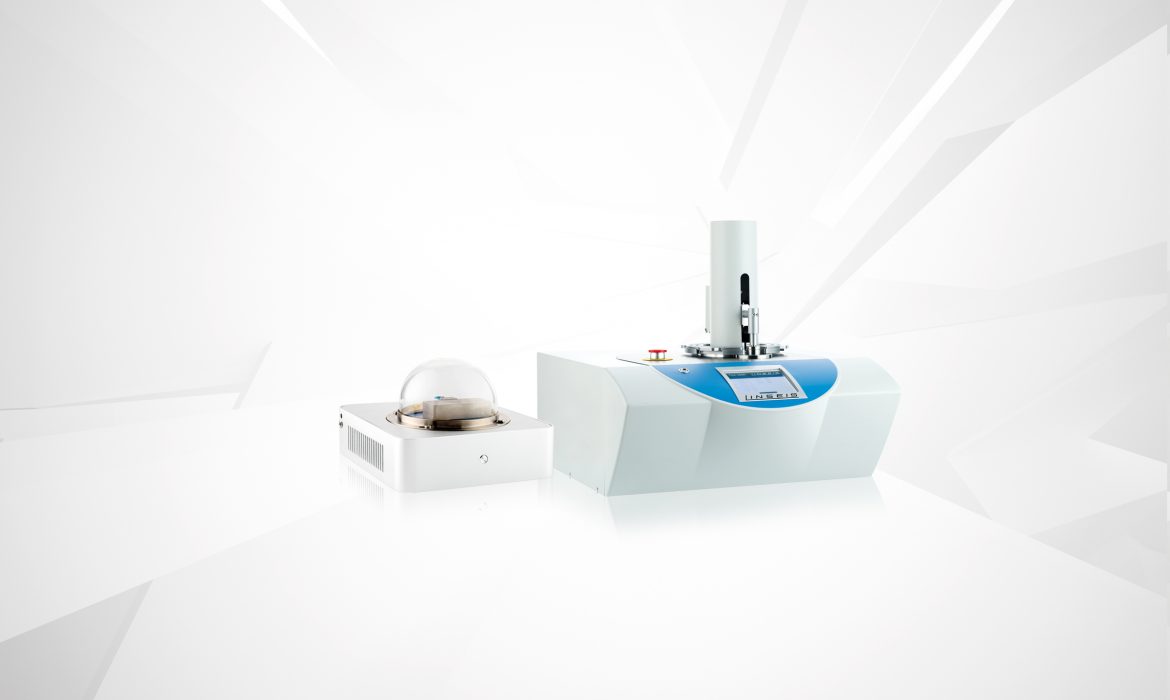Determination of heat flow and heat capacity with a DSC

Differential scanning calorimetry is a thermoanalytical method for the quantitative determination of heat flow. Thermal analysis, for which LINSEIS provides the appropriate equipment, not only measures the specific heat capacity, but also the amount of heat consumed or released in chemical and non-isothermal physical processes. In so-called calorimeters, the measurement of the state or temperature change of the sample forms the basis for the measurement of a heat flow. The accuracy of the measurement results depends on the precision of the temperature measurement.
Types of calorimeters
The differentiation of the calorimeters takes place according to the operating mode (anisothermic or isothermal) or according to the measuring principle (eg heat conduction or power compensation principle). Most commonly used is the anisothermal variant in which the meter is thermally isolated from the environment. Key anisothermal calorimeter types include liquid calorimeters and metal or bomb calorimeters.
In liquid calorimeters, a liquid absorbs the heat converted. An agitator ensures uniform temperature distribution. The amount of heat is measured by the temperature change of this liquid.
In the case of metal calorimeters, the amount of heat to be determined is absorbed by a metal body (usually made of copper, aluminum or silver) which conducts heat well and enables a rapid, uniform temperature distribution. Unlike the liquid calorimeter, this design requires no stirring device.
While anisothermal processes are used where heat exchange takes no more than 20 minutes, isothermal equipment is used for slower reactions, sometimes over several hours.
In isothermal calorimeters, which include the dynamic differential calorimeter, the temperature remains constant during calorimetric processes. Here, the heat input causes an isothermal phase transformation (evaporation, melting, condensation or sublimation) of the calorimeter substance. The amount of heat converted can be determined from the associated volume or weight change of the substance taking into account its heat of transformation.
How Differential Scanning Calorimetry works
Heat Flow Differential Scanning Calorimetry (DSC) is a further development of differential thermal analysis. The difference is that the DSC allows calibration of the heat flows between the furnace and the sample, and between the furnace and the reference, thus enabling the determination of numerous caloric sizes.
The essential components of a DSC measuring cell include the furnace and an integrated sensor with sample and reference crucible shelves. The sensor surfaces are either part of or connected to the thermocouples. With the dynamic differential calorimeter, on the one hand, the temperature difference between the sample side and the reference side, and on the other hand, the absolute temperatures of both sides can be determined.
When heating a DSC measuring cell, the heat capacity of the sample causes the reference side to heat up faster than the sample side. This means that the reference temperature rises slightly faster than the sample temperature. During heating at a constant heating rate, both curves run parallel until the occurrence of a sample reaction (eg melting). During this reaction, the sample temperature remains the same, while the temperature of the reference side continues to increase linearly. When the reaction is over, the temperature of the sample also increases again and again has a linear slope.
The temperature difference between sample and reference side resulting from the reaction can be recognized by a peak in the difference signal. The area of the peak over the temperature or time forms directly from the released or absorbed amount of heat of the sample.
Applications for differential scanning calorimetry
Dynamic differential scanning calorimetry can be used to investigate a wide variety of materials such as compact solids (eg plastics, ceramics or metals), powders (eg drugs or minerals), fibers and fabrics, liquids and viscous samples such as creams or pastes.
Among other things, the following provisions can be made with the DSCs available from LINSEIS:
- Melting and glass transition temperatures
- Crystallinity
- Phase transitions
- Specific heat capacity
- Cure degree of adhesives and resins
- Oxidation stability
The LINSEIS devices for differential scanning calorimetry work according to the heat flow principle. They offer a high detection sensitivity and measuring accuracy and are therefore excellently suited for use in research and science, in material development or in quality control.

